Peugeot Partner Electric (2017 – 2022) Review
Peugeot Partner Electric (2017 – 2022) At A Glance
The Partner Electric is - as the name implies - the plug-in version of Peugeot's popular van. However, unlike the standard diesel-powered version, the electrified panel van boasts zero tailpipe emissions and that means it is exempt from VED, congestion charging and Ultra Low Emissions Zone fees.
Available in two load lengths - L1 or L2 - the Partner Electric offers the same load area as the diesel-powered version, although its payload capacity is reduced to 552kg (L2) or 636kg (L1) due to the added weight of the battery. In comparison, the standard Partner will carry up to 860kg.
If the reduction in weight capacity isn't a problem then the Partner will fulfil all of your light van needs. The batteries are hidden under the load floor and this means they don't hinder the van's practical nature. All versions get three seats in the cabin and - owing to the fact that the gearbox has been replaced with a small dial on the dashboard - you can easily fit three adults.
Admittedly, the interior feels somewhat dated compared to the latest vans, but the seats are firm and supportive, which means long distance comfort is never an issue. Standard equipment is a little sparse though, with no Bluetooth or DAB audio.
Fortunately, everything is easy to find and use and the battery meter is situated in the instrument binnacle, which clearly displays the battery charge. Replenishing the battery pack is simple; all you have to do is plug in the lead and leave the van to recharge. From a standard three pin plug, you’ll be looking at 10 hours, while a rapid D/C charger will take the battery from zero to 80 per cent in just 30 minutes.
On the road, the Partner feels very much like any other compact van, with smooth handling and very little body roll in the corners, which is impressive given the additional weight of the batteries. The electric motor is also quiet, which makes it a comfortable companion to whirr around town.
Peugeot provides an eight year warranty for the battery pack and running costs are low, with prices starting from just 2p-per-mile, if you recharge the battery at home overnight. However, while its green credentials are appealing, there's no hiding the fact that the Partner looks and feels like a van that's getting on in years. Its claimed range also drops to 80 – 90 miles under real world driving conditions, which means anyone who pushes towards its limits will quickly develop a case of range anxiety.
Driving the Peugeot Partner Electric (2017 – 2022)
The Peugeot Partner is one of the UK's best-selling vans, with builders, gardeners and delivery drivers all praising its car-like handling. This is down to the fact that the chassis has much in common with the Peugeot 308 family hatch, so a supple ride is a given, along with smooth and responsive handling.
The Partner Electric is designed for use in busy urban areas and it excels here, with zippy performance and nimble 11 metre turning circle. This means it's perfect for navigating congested high streets or narrow side roads, with its compact size (2.1 metre width and 4.6 metre height) making it perfect for navigating areas with limited access, such as multi-storey car parks or building sites.
The electric motor develops 97PS and a notable 215Nm of torque from 1500rpm, which results in swift (and silent) sub-30mph performance. Peugeot advertise the range at 106mph, but in real world driving conditions this is closer to 80 - 90 miles. However, while nipping around town, the charge seems to hold at a decent rate. It's only on the motorway that it diminishes at an alarming rate once you approach 70mph, which underlines the fact that this is a van very much designed for urban use.
The batteries are stored beneath the load floor, which provides a low centre of gravity and means corners can be taken with confidence. Body roll is also surprisingly well-controlled, preventing loads in the back from toppling over whenever you attempt a slight turn. The ride is also supple when the van is empty, which is a pleasant change from the hard bounce that vans can sometimes suffer when not carrying a load.
Unlike its rivals, the Partner isn't offered with any form of autonomous safety kit. This means there is no automatic city breaking or adaptive cruise control, although the Partner Electric does get regenerative braking, which converts the kinetic energy into useable power for recharging the battery.
Peugeot Partner Electric (2017 – 2022) interior
Based on a van that was launched back in 2008, the Partner Electric feels very old school in its layout, with lots of hard, dull, scratchy plastics that are not particularly pleasant to the eye or touch. The radio and LCD screen look like something from a van of the late 1990s but, despite the time warp design, the cabin feels robust.
One of the key areas for any van is comfort and the Partner benefits from its veteran status, with its basic layout providing lots of head and leg room. The reach and rake adjustable steering allows the driver to find a comfortable driving position, while the seats are firm and supportive. All vans get three seats as standard and fitting three adults in is easy, owing to the fact that the gearbox has been removed and replaced with a small dash mounted dial.
Available in two lengths, L1 or L2, the Partner boasts the same amount of load space as the diesel-powered version, with the lithium-ion battery pack being located under the load floor. This means you get a load length of 2050mm or 3250mm with the optional Multi Flex passenger seats that fold forward. The load width is also a useful 1380mm and 1230mm between the wheel arches.
The Partner Electric can't tow anything and won't carry as much as its diesel-powered rivals when it comes to payload capacity. Indeed, the payload limit is reduced to 552kg (L2) and 636kg (L1) due to the added weight of the battery packs. In comparison, the standard Partner will carry up to 860kg and tow 1.2 tonnes when hooked to a braked trailer.
There isn’t a lot of choice in terms of trim levels – the Partner Electric is limited to SE – which means you get twin sliding side doors and a hard plastic floor protection as standard, along with two 12 volt sockets (one in the cab and one in the load area) along with six tie-down hooks for securing loads. However, Bluetooth, DAB audio and touchscreen navigation are all optional extras.

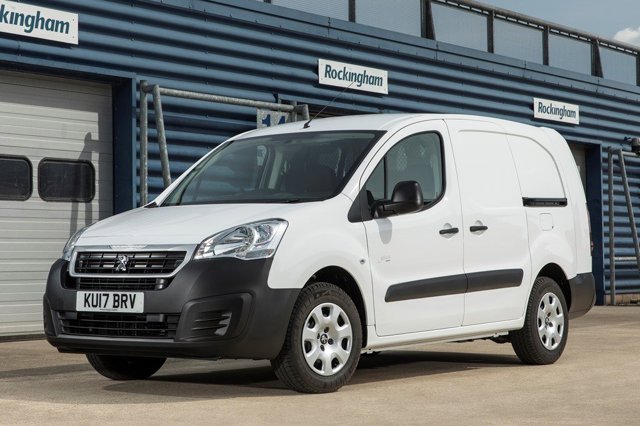
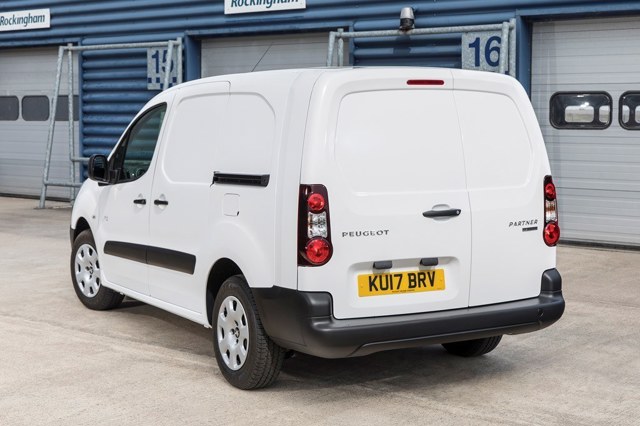
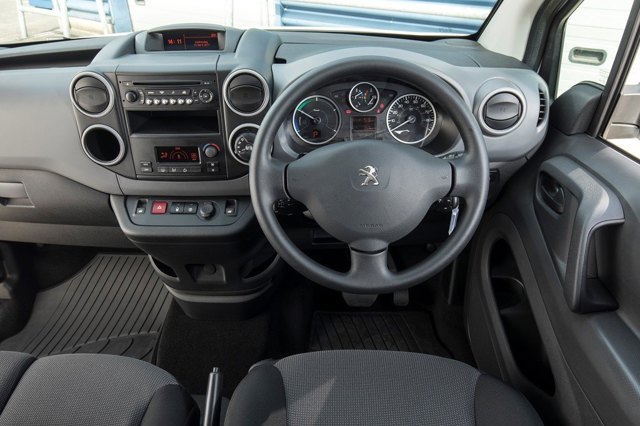
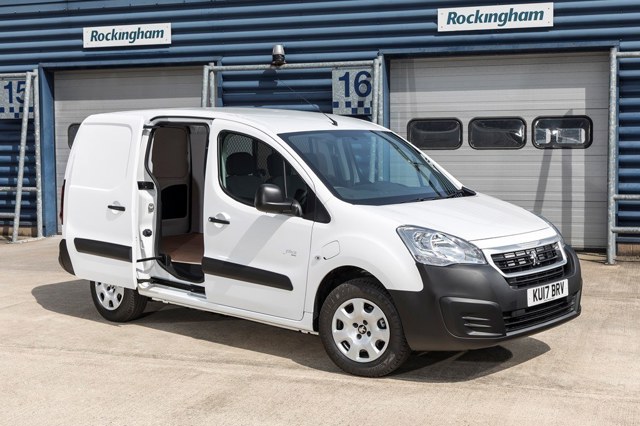
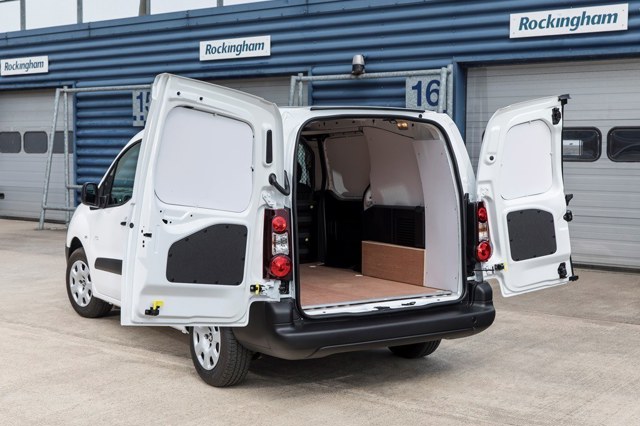
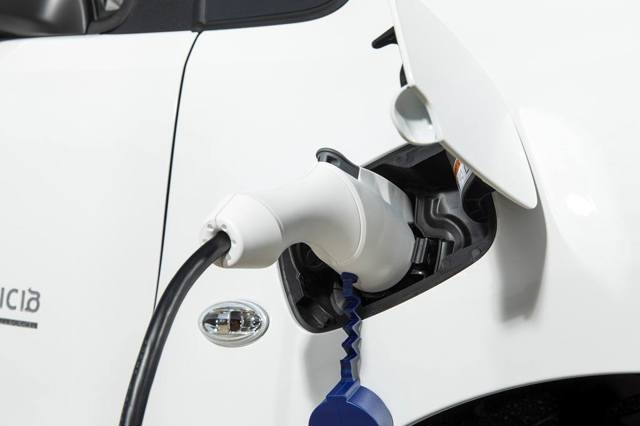
:no_upscale():format(webp)/https://cdn.uk.prod.group-mobility-trader.com/images/cas/feadb42f0c25a120aa6ef0be8fd27307/0417eceb6de3610196fa8f159cc609c9.jpg)

 Easy to drive, low running costs, can be recharged from zero to 80 per cent in 30 mins via a D/C rapid charger.
Easy to drive, low running costs, can be recharged from zero to 80 per cent in 30 mins via a D/C rapid charger.
 Will only cover 80 - 90 miles in real world driving conditions, won't carry as much as its rivals, based on a van that was originally launched in 2008.
Will only cover 80 - 90 miles in real world driving conditions, won't carry as much as its rivals, based on a van that was originally launched in 2008.
:no_upscale():format(webp)/https://cdn.uk.prod.group-mobility-trader.com/images/cas/4254ac75236f4cf1f37dc61324a52ce2/15b3e34065cdf8ff8d82df863639b99c.jpg)
:no_upscale():format(webp)/https://cdn.uk.prod.group-mobility-trader.com/images/cas/612b283e06bdddd570ba9e67a55fbca0/ebb5ac723b7df2e73d8f88dc2877894c.jpg)
:no_upscale():format(webp)/https://cdn.uk.prod.group-mobility-trader.com/images/cas/a8b0f0d86d3f1c9934efea6beee43b20/9c4b436b90eed55f96cbca41d54cde2f.jpg)